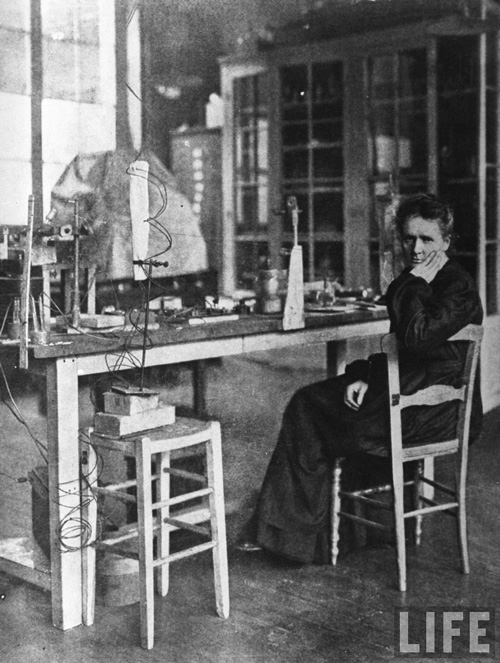Driven by her passion for
science Marie began research after getting
licentiateship in mathematical science and
physics. With the help of her physics professor,
Gabriel Lippman, Marie got a paid commission from
the Society of Encouragement of National Industry.
Lippman let Marie begin her first experiments in
his laboratory, but she needed more space for her
experiments so someone suggested that she talk to
Pierre Curie. Pierre helped her find lab space to
use and helped her with her experiments. A year
later they were married.
Despite less-than-ideal lab situations during their early years of research the Curie's isolated Polonium and Radium. Once Radium was isolated they were able to begin research on the effects of radium. Marie became especially interested in the therapeutic properties of Radium. Together Marie and Pierre Curie got half of a Nobel Peace Prize in 1903 for their work in investigating spontaneous radiation. In addition to her licentiateship in mathematical science and physics, Marie also got her doctorate of science degree in 1903. After Pierre died in 1906, Marie took his place as professor of general physics in the faculty of science, making her the first women to hold that position. She was later appointed director of the Curie Laboratory in the Radium Institute at the University of Paris. In 1922 she became a member of the Co-operation of the League of Nations. Marie Curie was a highly respected physicist and one of the first women to become so successful in physics. In 1911 Marie recived her second Nobel Prize for her work in radiation. |
|
|
